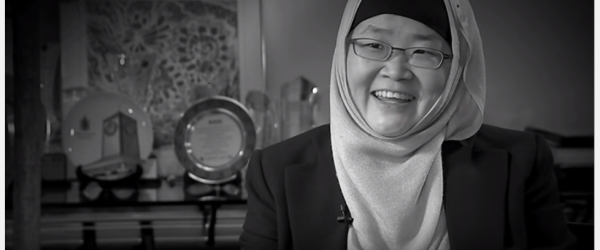The topic of International Documentary Film Festival Amsterdam came up at lunch at work, so I raved about Miguel Peres Dos Santos's film 'Voices' and how some of the things you see in the film in the 70s/80s are still uncannily being seen and heard in the media of contemporary Dutch society.
For example, the film has excerpts from news interviews of a White Dutch man in the streets, saying that he doesn't think it's fair that "Mr Foreigner [from Curacao]" should get a house before him.
A White Spanish colleague (married to White Dutch) at the lunch table starts getting agitated.
Just a couple of days ago, I was also describing an incident that happened when I was at the film screening in Amsterdam. I had no choice but to bring Nootje along (and just hoping for the best). He ended up sitting through the 20-minute film just about okay, but he was getting restless and needed to sit on the floor with his toys during the Q&A. I wasn't too optimistic about being able to stay the whole way, so I was ready to leave -- having already picked a seat close to the exit and given weary smiles to the kind-faced host who wished me luck when I walked in with Nootje -- if he needed to.
When I described the incident on Facebook, an acquaintance commented that the same would have happened even if I were white, since the problem, according to her, is that Dutch people don't like playful kids.
For example, the film has excerpts from news interviews of a White Dutch man in the streets, saying that he doesn't think it's fair that "Mr Foreigner [from Curacao]" should get a house before him.
A White Spanish colleague (married to White Dutch) at the lunch table starts getting agitated.
WSC: You cannot say 'Wow, things like that are being said in the 70s', this is how we are brought up in society and this is what we learn from our parents".WSC refuses to believe that I have heard White people say these things to my face. Woman, you are White. It's impossible for you to see this 'negative' side and hear such 'negative' comments directed to you or people that share your religion, skin colour, hair colour or dress code.
[Right about here I'm hoping she meant that therefore it's an subconscious narrative that should be changed]
Me [confused]: "No, my point is that these things are still being said today. They still talk about immigrants like this."
WSC [getting agitated and getting up to put her things away, ready to leave the room]: You keep saying "they", "they", who do you mean??
Me: The White Dutch! And the media.
WSC: Well you seem to have a very negative view of White Dutch people.
[Nope, I was wrong! Racism is something natural, socialised, and merely a faulty perception of a POC.]
Just a couple of days ago, I was also describing an incident that happened when I was at the film screening in Amsterdam. I had no choice but to bring Nootje along (and just hoping for the best). He ended up sitting through the 20-minute film just about okay, but he was getting restless and needed to sit on the floor with his toys during the Q&A. I wasn't too optimistic about being able to stay the whole way, so I was ready to leave -- having already picked a seat close to the exit and given weary smiles to the kind-faced host who wished me luck when I walked in with Nootje -- if he needed to.
Nootje started to talk ("Airplane is taking off!") during the Q&A, prompting a series of Very Dirty Looks from 3-4 White women just in front of him. One old woman made a big fuss, after turning around pointedly to stare at Nootje, of moving to a different seat. It wasn't loud (a 2-year-old talking, seriously) but I left the theatre after that.
When I described the incident on Facebook, an acquaintance commented that the same would have happened even if I were white, since the problem, according to her, is that Dutch people don't like playful kids.
That's the two main issues right there: she spoke of "Dutch people" when she really meant White Dutch, because Dutch POC are usually friendly to kids. And then there's the obvious thing, I'm NOT White, am I?
While I don't expect her to be able to empathise that I faced such a hostile situation, she expected that I would know what it feels like to be White/the norm. And with one sentence she had managed to turn the whole situation upside down: now I was supposed to feel sorry for her and her unappreciated playful child too.























